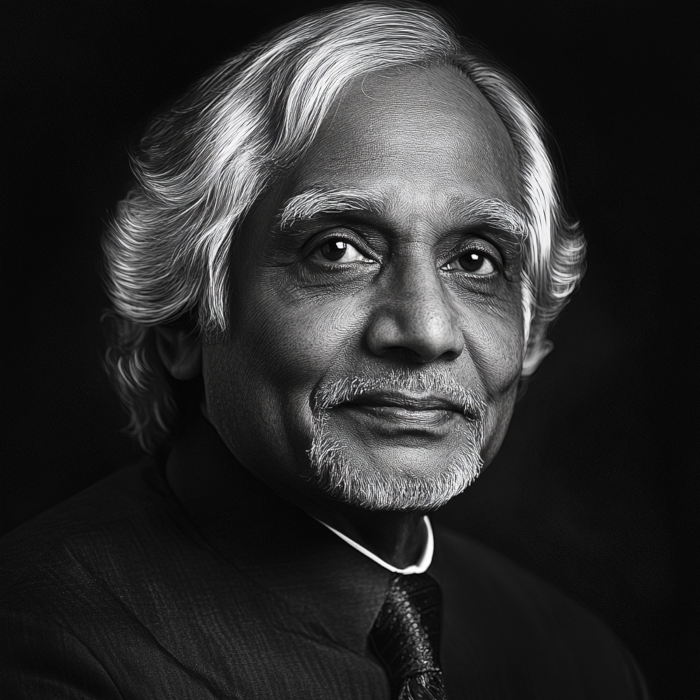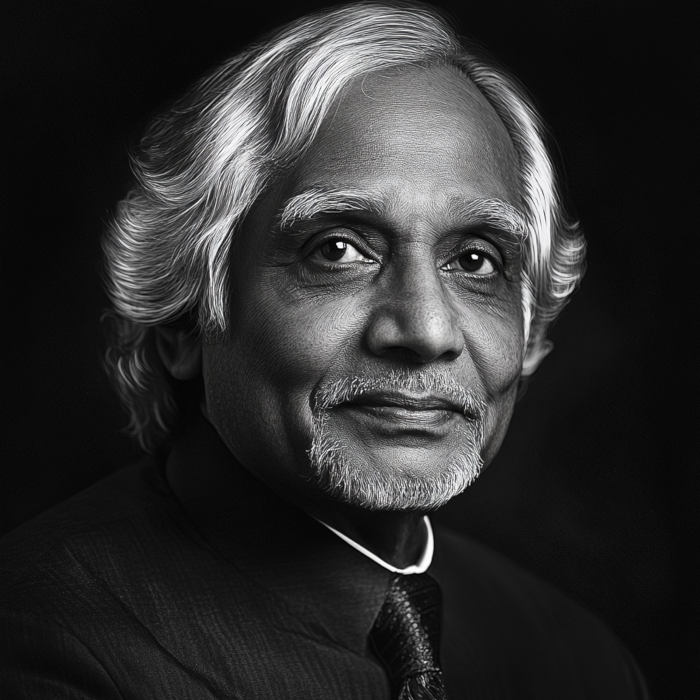


Dr. A. P. J. Abdul Kalam (1931–2015), full name Avul Pakir Jainulabdeen Abdul Kalam, was an Indian aerospace scientist, educator, and statesman who served as the 11th President of India from 2002 to 2007. Often referred to as the "People's President" and "Missile Man of India," Kalam was instrumental in advancing India's space and missile programs. He is remembered for his humility, vision, and deep commitment to India's progress, especially in science and technology.
Birth: A. P. J. Abdul Kalam was born on October 15, 1931, in Rameswaram, a small town in the southern Indian state of Tamil Nadu. His father, Jainulabdeen, was a boat owner and imam at a local mosque, while his mother, Ashiamma, was a homemaker. Kalam came from a modest background, and his early life was marked by financial challenges.
Education: Despite his family's limited means, Kalam was a bright student with a keen interest in mathematics and science. He attended Schwartz Higher Secondary School in Ramanathapuram and later graduated in physics from St. Joseph's College, Tiruchirappalli. He pursued aerospace engineering at the Madras Institute of Technology (MIT), Chennai. Kalam's determination and passion for learning laid the foundation for his future contributions to India's defense and space programs.
Early Career: After completing his education, Kalam joined the Aeronautical Development Establishment of the Defence Research and Development Organisation (DRDO) as a scientist. In 1969, he was transferred to the Indian Space Research Organisation (ISRO), where he became the project director of India's first Satellite Launch Vehicle (SLV-III). This project successfully deployed the Rohini satellite in near-earth orbit in 1980, marking India's entry into the space age.
Missile Development: Kalam returned to DRDO in the 1980s and played a pivotal role in the development of India's missile programs. He was the chief architect behind the development of the Agni and Prithvi missiles, which significantly enhanced India's defense capabilities. His work earned him the nickname "Missile Man of India."
Pokhran-II Nuclear Tests: In 1998, Kalam was a key figure in India's successful nuclear tests at Pokhran, which established India as a nuclear power. As the Chief Scientific Adviser to the Prime Minister and Secretary of the DRDO at the time, Kalam's leadership was crucial in this achievement.
Election as President: In 2002, A. P. J. Abdul Kalam was elected as the 11th President of India, succeeding K. R. Narayanan. His nomination was supported by both the ruling Bharatiya Janata Party (BJP) and the opposition Indian National Congress, reflecting his broad appeal and non-partisan image. Kalam's election was widely celebrated, and he quickly became known as the "People's President" due to his accessibility, humility, and deep connection with the youth of the nation.
Focus on Education and Youth: During his presidency, Kalam focused on promoting education, science, and technology, and inspiring the younger generation to dream big and work towards the nation's progress. He frequently interacted with students across the country, encouraging them to think creatively and pursue careers in science and engineering.
Vision 2020: Kalam outlined his vision for India in his book India 2020: A Vision for the New Millennium. He envisioned transforming India into a developed nation by 2020, emphasizing the importance of technological advancement, economic growth, and social equity.
Return to Academia: After completing his term as President in 2007, Kalam returned to his passion for teaching. He became a visiting professor at several Indian institutes and universities, including the Indian Institute of Management (IIM) Shillong, IIM Ahmedabad, and IIM Indore. He continued to engage with students and educators, advocating for a knowledge-based society.
Books and Writings: Kalam authored numerous books, many of which became bestsellers. His most famous work, Wings of Fire, is an autobiography that chronicles his early life, career, and contributions to India's space and missile programs. Other notable works include Ignited Minds, Mission India, and The Luminous Sparks. His writings often focused on his vision for India and the role of young people in shaping the future.
Awards and Honors: Throughout his career, Kalam received numerous awards and honors, including the Bharat Ratna, India's highest civilian award, in 1997. He also received the Padma Bhushan in 1981 and the Padma Vibhushan in 1990. His achievements in science, technology, and public service earned him international recognition and respect.
Death: On July 27, 2015, A. P. J. Abdul Kalam passed away after suffering a cardiac arrest while delivering a lecture at IIM Shillong. His death was mourned across India and the world, with tributes pouring in from leaders, students, and citizens who admired him for his contributions to the nation and his role as a mentor and guide.
Legacy: A. P. J. Abdul Kalam's legacy continues to inspire millions. He is remembered as a visionary leader who dedicated his life to India's development and progress. His emphasis on education, innovation, and youth empowerment has had a lasting impact on the nation. Institutions, scholarships, and awards have been established in his name, and his birthday, October 15, is celebrated as World Students' Day in honor of his contributions to education and his love for teaching.
Cultural and Popular Influence: Kalam's life and work have been the subject of documentaries, films, and numerous books. He remains an enduring symbol of how determination, hard work, and a commitment to learning can lead to transformative change. His teachings continue to resonate with people of all ages, particularly the youth, who see in him a role model for pursuing their dreams and contributing to society.
A. P. J. Abdul Kalam’s life story is one of remarkable achievement and profound impact. From humble beginnings in a small town, he rose to become a leading scientist, a beloved President, and an enduring symbol of hope and inspiration for generations to come. His vision for India as a developed nation continues to inspire efforts toward progress and innovation in the country.

We use cookies
We use cookies and other tracking technologies to improve your browsing experience on our website, to show you personalized content and targeted ads, to analyze our website traffic, and to understand where our visitors are coming from. Privacy Policy.